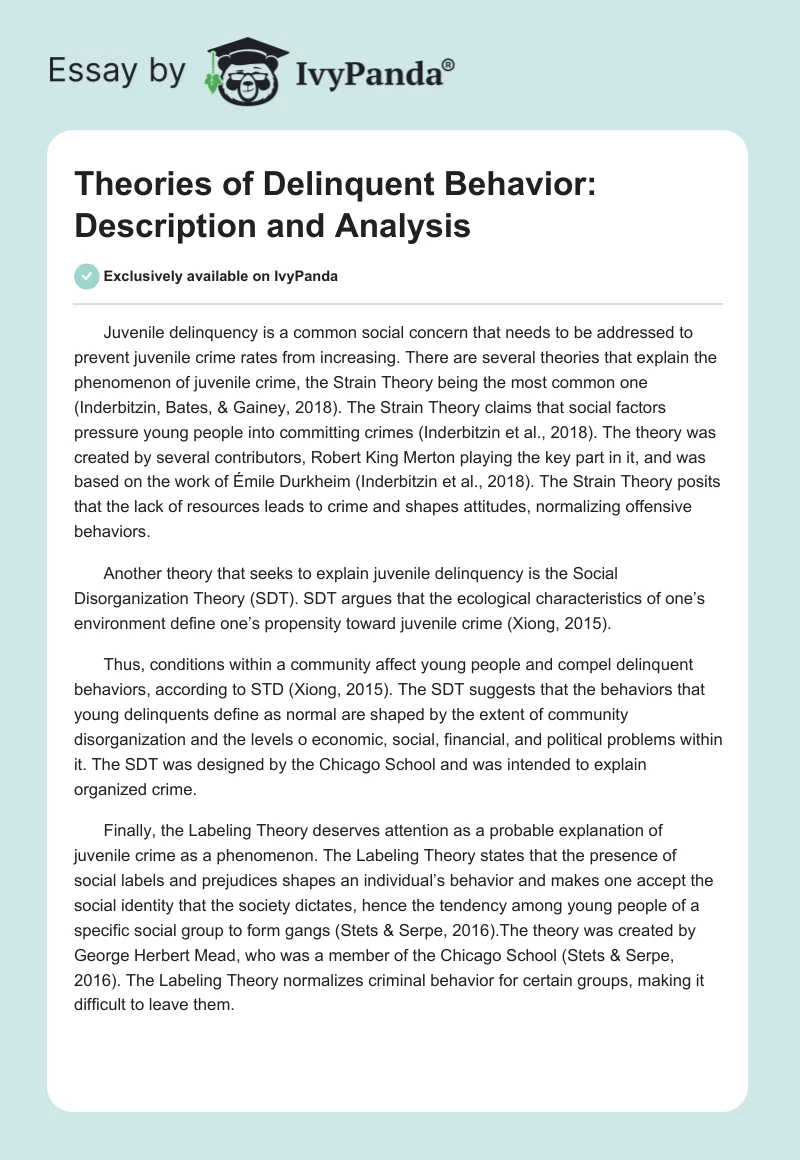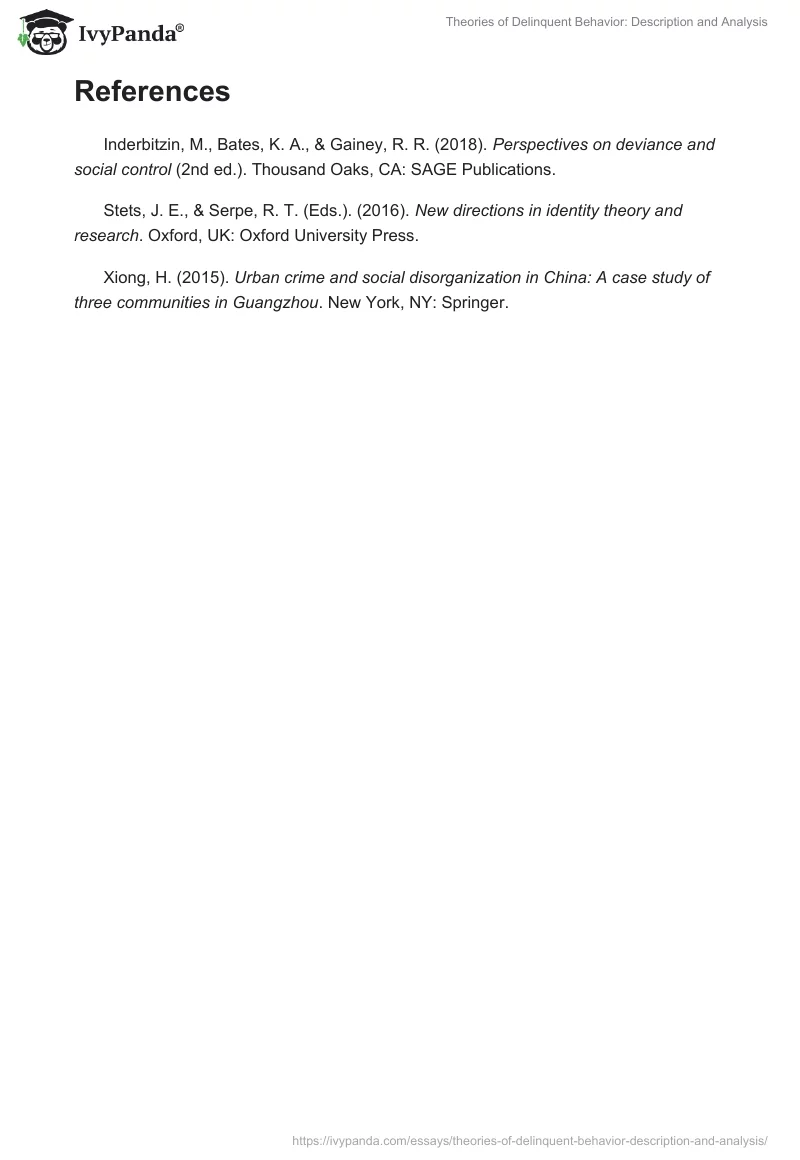Juvenile delinquency is a common social concern that needs to be addressed to prevent juvenile crime rates from increasing. There are several theories that explain the phenomenon of juvenile crime, the Strain Theory being the most common one (Inderbitzin, Bates, & Gainey, 2018). The Strain Theory claims that social factors pressure young people into committing crimes (Inderbitzin et al., 2018). The theory was created by several contributors, Robert King Merton playing the key part in it, and was based on the work of Émile Durkheim (Inderbitzin et al., 2018). The Strain Theory posits that the lack of resources leads to crime and shapes attitudes, normalizing offensive behaviors.
Another theory that seeks to explain juvenile delinquency is the Social Disorganization Theory (SDT). SDT argues that the ecological characteristics of one’s environment define one’s propensity toward juvenile crime (Xiong, 2015).
Thus, conditions within a community affect young people and compel delinquent behaviors, according to STD (Xiong, 2015). The SDT suggests that the behaviors that young delinquents define as normal are shaped by the extent of community disorganization and the levels o economic, social, financial, and political problems within it. The SDT was designed by the Chicago School and was intended to explain organized crime.
Finally, the Labeling Theory deserves attention as a probable explanation of juvenile crime as a phenomenon. The Labeling Theory states that the presence of social labels and prejudices shapes an individual’s behavior and makes one accept the social identity that the society dictates, hence the tendency among young people of a specific social group to form gangs (Stets & Serpe, 2016).The theory was created by George Herbert Mead, who was a member of the Chicago School (Stets & Serpe, 2016). The Labeling Theory normalizes criminal behavior for certain groups, making it difficult to leave them.
References
Inderbitzin, M., Bates, K. A., & Gainey, R. R. (2018). Perspectives on deviance and social control (2nd ed.). Thousand Oaks, CA: SAGE Publications.
Stets, J. E., & Serpe, R. T. (Eds.). (2016). New directions in identity theory and research. Oxford, UK: Oxford University Press.
Xiong, H. (2015). Urban crime and social disorganization in China: A case study of three communities in Guangzhou. New York, NY: Springer.


